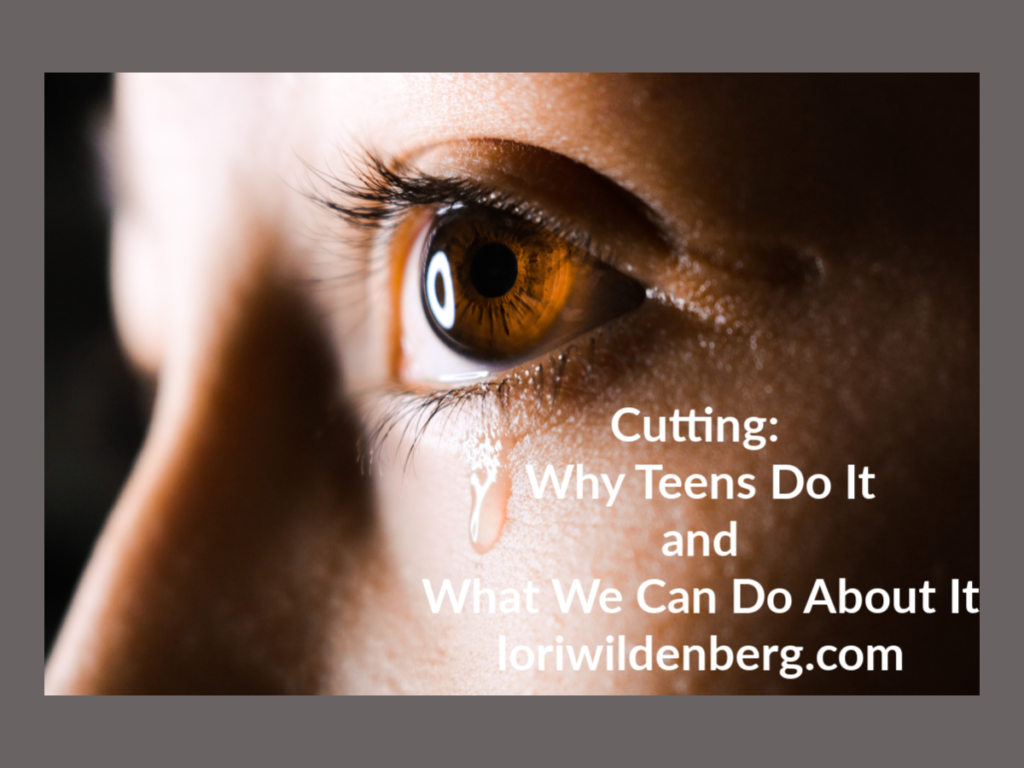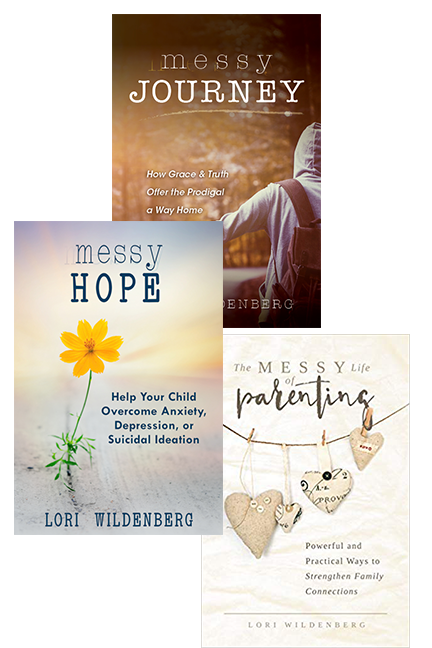
Cutting has become a behavior kids use because it is easily accessed, quickly achieved, and not uncommon. In fact it has become almost acceptable in the tween and teen world. The directive,“Cut it out!” is being taken literally by some kids. Cutting seems to be catchy. Lots of tween and teen girls and even some boys are doing it.
What is cutting?
Cutting is a self-destructive behavior where a person cuts into her skin intentionally, many times or even one time. Razors, knives, scissors, pins, and the side of a can of soda-pop are the most common weapons used to inflict self-injury (SI).
What it is not:
Cutting is not a suicide attempt, but it is serious.
Why cut?
Typically cutting is a way of coping or dealing with stress or emotional pain. According to WebMD, “Psychiatrists believe that, for kids with emotional problems, self-injury has an effect similar to cocaine and other drugs that release endorphins to create a feel-good feeling.”
The types of cutters vary.
6 Different Cutter Profiles
1. The Testing It Out Cutter. It may be a type of peer influence; noticing or hearing about peers cutting and wanting to discover what that is all about. This cutter could very well only perform this experiment as a one-time only experience.
2. The Drama Queen Cutter: This person is attempting to get attention by doing shocking things. She thrives on any kind of attention. If she can’t get what she needs through positive means, negative attention will do just fine. She is a cousin to the Teller of Tall Tales or The Big Fat Liar.
3. The I Wanna Be IN Control Cutter: Rebellion and resentment drive this behavior. The cutting communicates that the authority figure in the child’s life can’t control the child any more. Two goals are accomplished with this type of cutting, the parent feels helpless and the child feels as if she wins.
4. Got Ya Back Cutter: This similar to the I Wanna Be IN Control Cutter but revenge is the driving force in this case. Both have an, I’ll show you, mentality. But this type of cutter could also cut in response to a peer situation. Usually this is done to get back at those who have caused emotional pain. (Sort of a Make My Day mentality…with the exception that harm is to self.)
5. The Coping Cutter: This seems to be the most common reason for cutting. It is a way to release stress and distract the cutter from whatever is causing despair.
6. The Self-Loather: I deserve to be punished, to hurt, to have pain. This individual cuts because of feelings of self-hate. Sadly this person carries around a lot of shame and guilt; first from the deeper issue and then from the cutting.
Curiosity and control are a big part of the cutting behavior. Feelings that precipitate cutting are typically anger and/or anxiety.
Cutting is a behavior. Behavior is always goal oriented; seeking to control others or to control emotions. Cutting is sometimes a way, albeit a destructive and unhealthy way , to release or cope with the stressors of life. It is a symptom, an indicator, that something is wrong. Stopping the cutting is only one part of the solution.
Cutting is serious. The heart issue that motivates the cutting needs to be discovered and addressed.
Cutting can become compulsive and hard to stop. Even if this behavior is stopped, other negative behaviors may surface if the thing that ails the cutter is not identified and addressed. Get to the root of whatever the issue may be. Is it a need for more freedom, a need for love, a need for independence, or a need to belong?
Here are some questions to ask yourself if you wonder if your child may be susceptible to or involved in cutting:
- Is your child a part of the Goth culture (dark clothing and makeup)? If so, she or he may be cutting?
- Does your young person have an eating disorder? If so, cutting may also be going on.
- Does your tween or teen have a physiological or personality disorder like: borderline personality disorder, anxiety disorder, bipolar disorder, or schizophrenia?
- Does your child wear pants or long sleeves to cover the cuts on her forearms, wrists, inner thighs, or under the arm? (Bellies are also a place where kids cut.)
If you discover your child is indeed cutting, don’t stay silent and hope it goes away. Instead pray, seek wise counsel, and get psychological and medical help. Do whatever you need to do to keep your child safe.
While you are helping your child recover, build your relationship. Listen. Have fun together. Find things you have in common. Spend more time together. Avoid talking about “the thing” every time you are in each other’s space. Pray God reveals to you and to your child what deeper issues need to be addressed and dealt with in a healthy way.
If you want more information on cutting, I found this site to be the most helpful: http://kidshealth.org/teen/your_mind/mental_health/cutting.html
Therefore prepare your minds for action; be self-controlled;
set your hope fully on the grace given to you when Jesus Christ is revealed.
1 Peter 1:23
Click here to listen to the Moms Together Podcast on Cutting.



